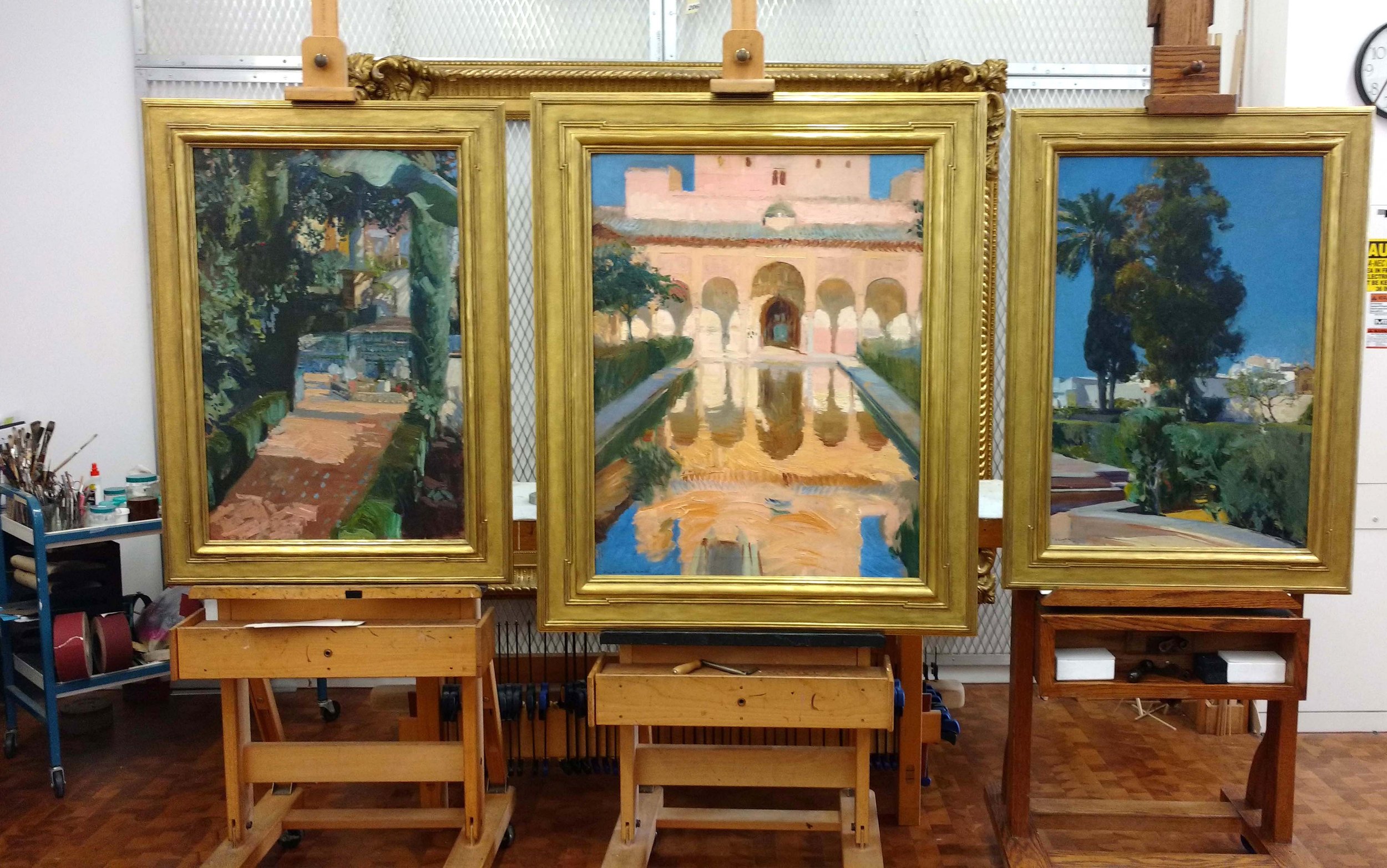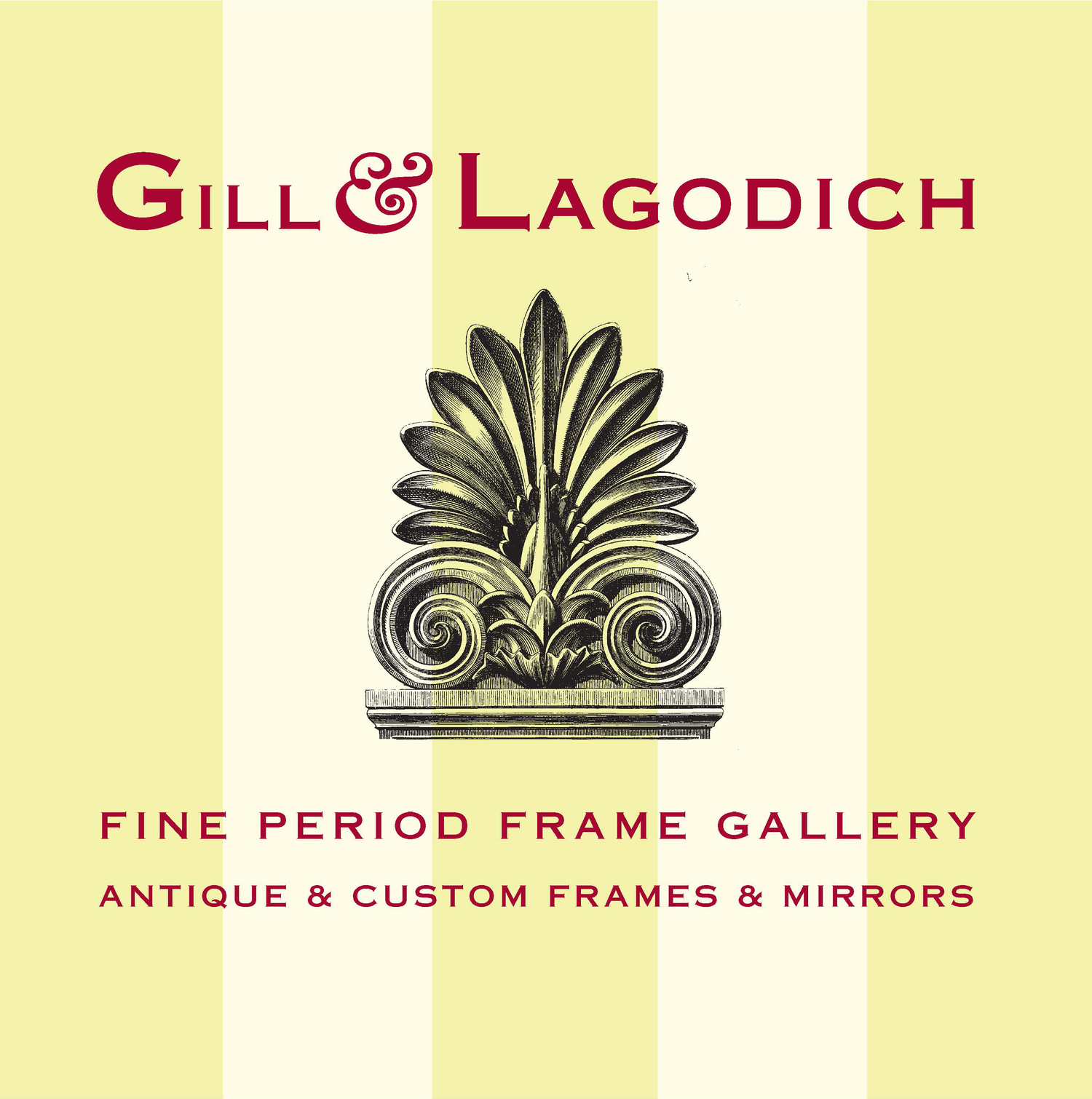THE J. PAUL GETTY MUSEUM, MALIBU, CA

JOAQUÍN SOROLLA Y BASTIDA (1863–1923)
Left: Court of the Dances, Alcázar, Sevilla, 1910, 37-1/2 x 25 in. Custom-made replica, Early 20th-century American Arts and Crafts frame, gilded hand-carved wood with stippled gesso panel, 22k French Pale gold over red bole, molding width 4-1/2 in. “This is one of a series of four paintings of townscapes and garden scenes in Seville that Joaquín Sorolla y Bastida painted in 1910. Two years earlier, he had made a similar series of views in the same city. While he retained the brilliance and atmosphere of his 1908 Seville paintings, he seems to have approached this second series in a more traditional manner. The courtyard of Seville's Alcázar Palace, the city's most splendid example of Moorish architecture, sparkles in the dappled summer sunlight. As always, Joaquín Sorolla y Bastida was concerned with color and light, brilliance and atmosphere. The colored reflections of the light animate the scene and help to define the forms, creating a sense that nature is ever-changing.” —museum label
Center: Hall of the Ambassadors, Alhambra, Granada, 1909, 41 x 32-1/4 in. Custom-made replica, Early 20th-century American Arts and Crafts frame, attr. Artists Framing Co, New York makers, gilded hand-carved wood with stippled gesso panel, 22k French Pale gold over red bole, molding width 5-3/4 in. “The play of light on the water and against the sun-drenched walls of the Alhambra, one of Spain's most influential architectural achievements, was ideally suited to Joaquín Sorolla y Bastida's artistic mission: exploring the changing effects of light under the broadest possible range of conditions. Just as the Alhambra's architects had interwoven light and shade, stone and water, Sorolla captured the myriad patterns created by the architecture, water, and light together. The shadows of the thin columns against the walls create a pattern reflected in the water, whose liquidity is remarkable, given the thick gestural paint that Sorolla applied. The thirty-five-acre Alhambra, built between 1238 and 1358, was the last Moslem stronghold in Western Europe in the late Middle Ages. The Moorish architectural style reached its ultimate refinement here, an airy fantasy that almost seems to float, despite its solid construction of stone and stucco.” —museum label
Right: Corner of the Garden, Alcazar, Sevilla, 1910, 37-1/2 x 25 in. Custom-made replica, Early 20th-century American Arts and Crafts frame, gilded hand-carved wood with stippled gesso panel, 22k French Pale gold over red bole, molding width 4-1/2 in. “In this view of the garden at Seville's Alcázar Palace, Joaquín Sorolla y Bastida concentrated on the geometry of form and the clear, bright sunlight of southern Spain instead of the changing reflections of light. He had returned to Seville in 1910 to create a second series of paintings, four paintings of townscapes and garden scenes, following the series he had painted in 1908. While he retained the brilliance and atmosphere of his earlier paintings, he seems to have approached this second series in a less fanciful manner. At the auction of the Thomas Fortune Ryan collection in 1933, J. Paul Getty zealously purchased ten paintings by Sorolla. He later wrote of that moment: ‘I was struck by the remarkable quality of Sorolla's paintings, being especially fascinated by his unique treatment of sunlight. . . . Although the purchase of these Impressionist works was a major digression from my usual fivefold collecting path, my opinion regarding their beauty, appeal and artistic merit remains the same as it was when I first saw the canvases.’” —museum label

